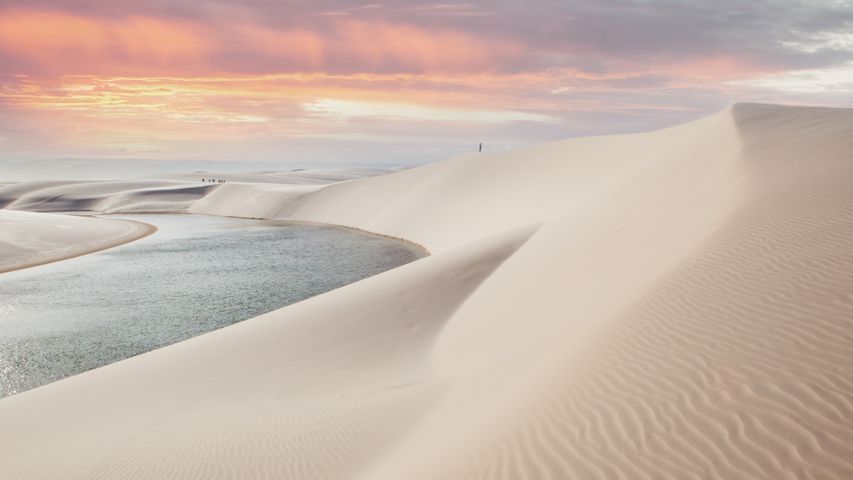Rub' al Khali desert on the border of Oman and the Emirate of Dubai
© Daniel Schoenen/Offset by Shutterstoc
Info. Rub' al Khali desert on the border of Oman and the Emirate of Dubai
An unlikely tree stands in the Rub' al Khali desert in the Arabian Peninsula. The Rub' al Khali, meaning the ‘Empty Quarter’, spreads across 650,000 square kilometres. It is the largest area of continuous sand in the world, covering most of south-east Saudi Arabia, with smaller portions in Yemen, Oman and the United Arab Emirates. One of the driest places on Earth, almost nobody lives in Rub' al Khali, and much of the desert remains unexplored. Some of the dunes are as high as 250 metres, and the sand can be so soft that vehicles, camels and people may get stuck.
The Rub' al Khali wasn't always so dry. At various times between 2,000 and 6,000 years ago, monsoon-like rainfall formed shallow lakes in the spaces between the dunes. Most of these lakes were temporary, but some lasted hundreds of years and supported a variety of plants and animals, even large creatures like hippopotamuses, water buffalo and long-horned cattle. Rain isn't unheard of today, either. In May 2018, Cyclone Mekunu brought enough rain to once again form lakes in the Rub' al Khali, reportedly the first time that had happened in about 20 years.
Related Images
Bing Today Images






 Sunset at White Sands National Park, New Mexico, USA
Sunset at White Sands National Park, New Mexico, USA
 Sunset in Lençóis Maranhenses National Park, Maranhão, Brazil
Sunset in Lençóis Maranhenses National Park, Maranhão, Brazil
 Rock formations and sand dunes in the Sahara, Djanet, Algeria
Rock formations and sand dunes in the Sahara, Djanet, Algeria
 Camels in the desert, United Arab Emirates
Camels in the desert, United Arab Emirates
 Crescent Lake near Dunhuang, Gansu Province, China
Crescent Lake near Dunhuang, Gansu Province, China
 Gemsbok (Oryx gazella) in sand dunes, Namibia
Gemsbok (Oryx gazella) in sand dunes, Namibia
 Sand dunes with Sangre de Cristo Mountains in the background, Great Sand Dunes National Park and Preserve, Colorado, USA
Sand dunes with Sangre de Cristo Mountains in the background, Great Sand Dunes National Park and Preserve, Colorado, USA
 Climbers ascending Jungfrau, in the Bernese Alps, Switzerland
Climbers ascending Jungfrau, in the Bernese Alps, Switzerland